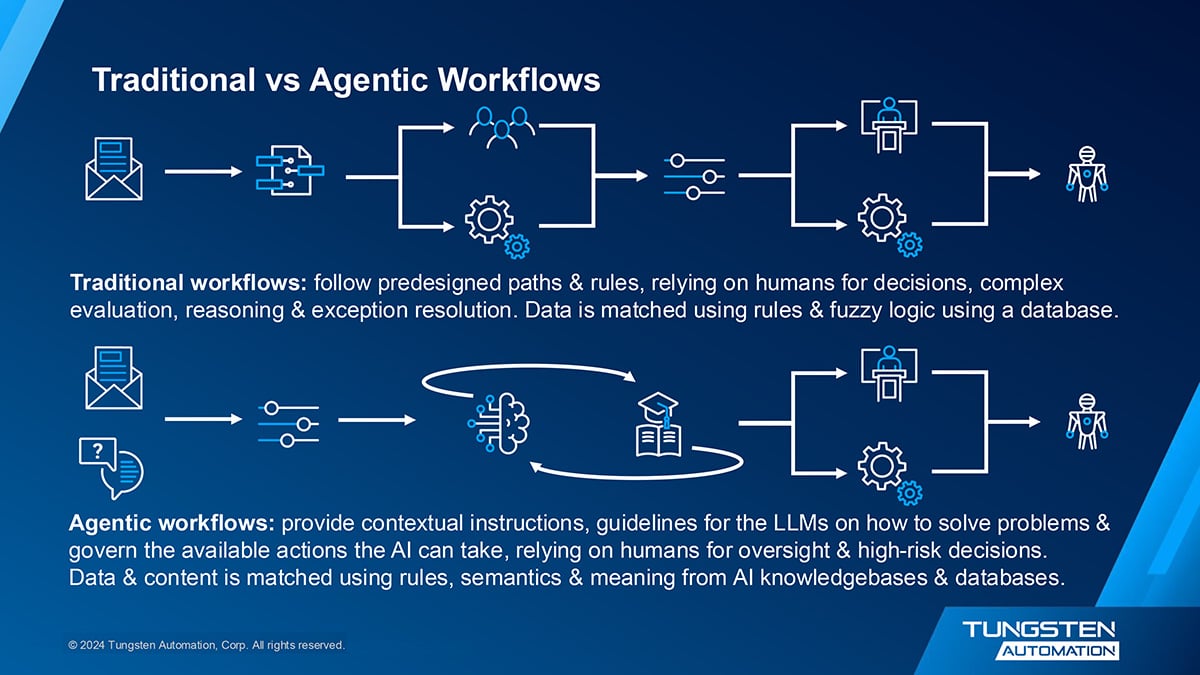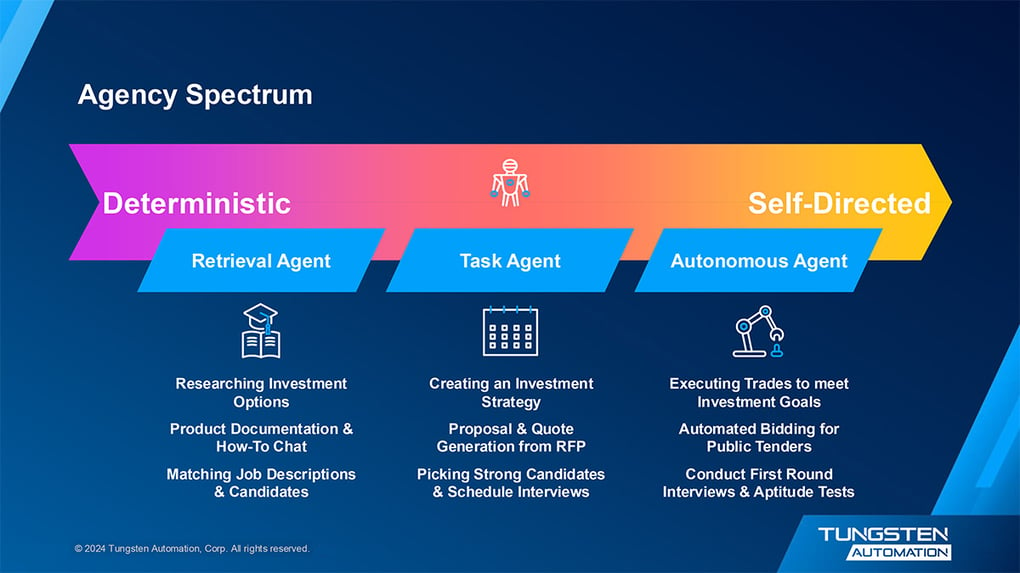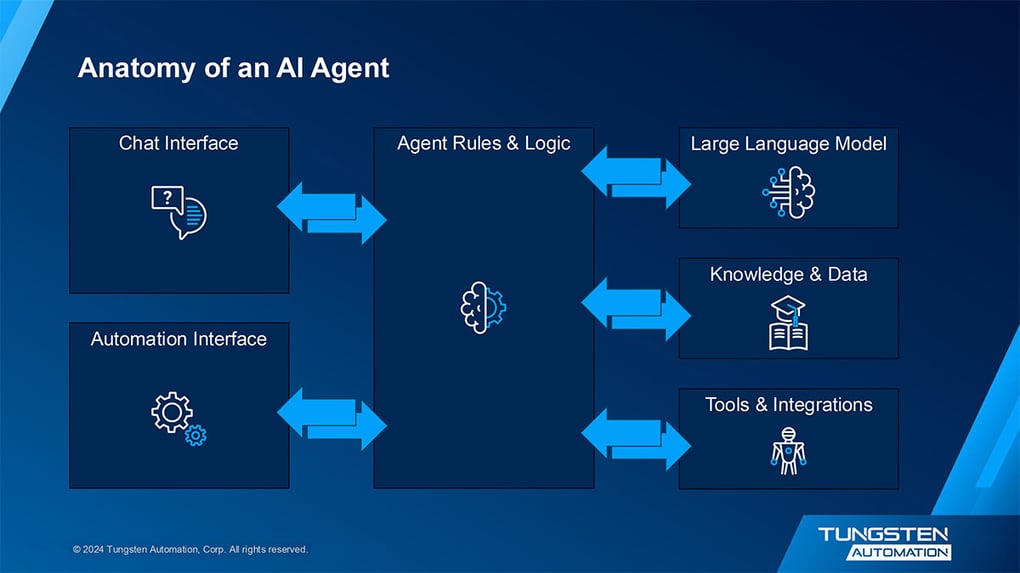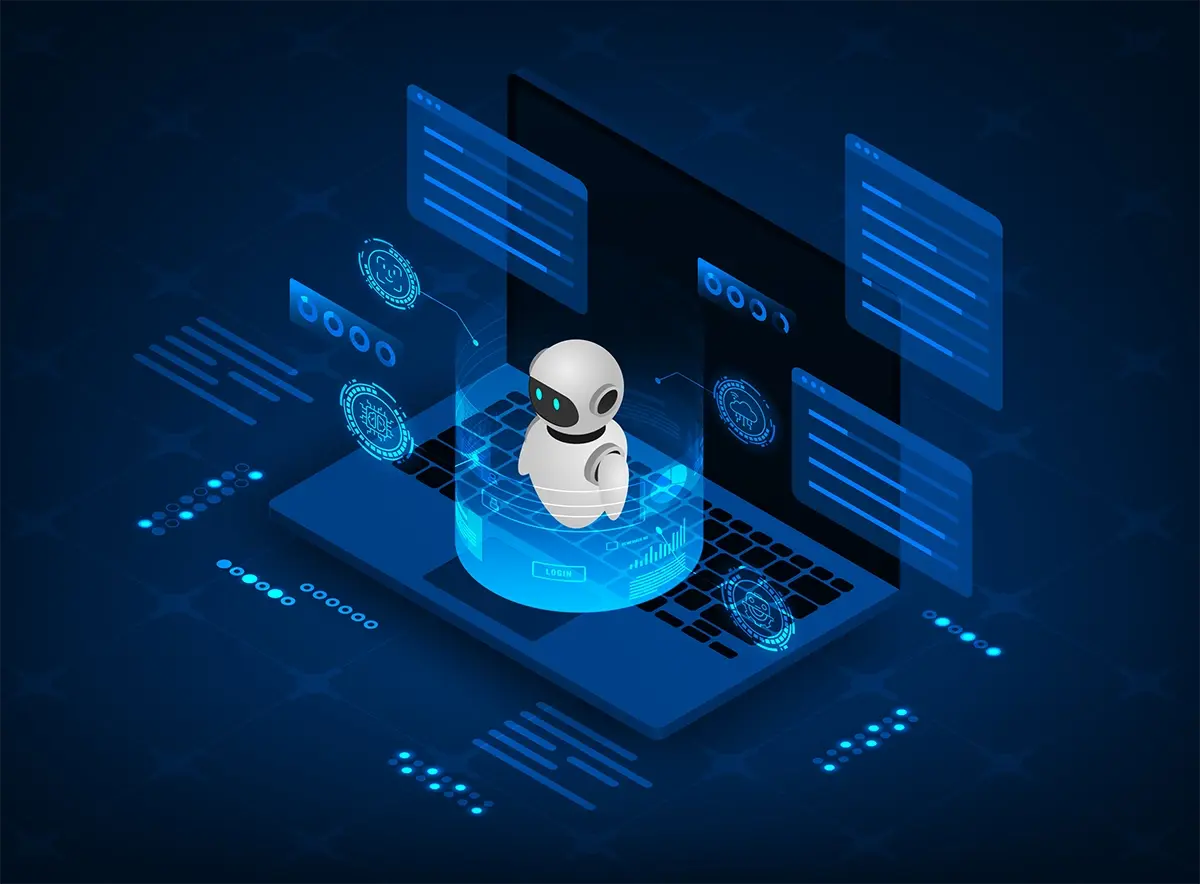The concept of AI Agents is becoming increasingly important as organizations seek to do more with less – automating intelligent tasks, accelerating decision-making, and creating context-aware processes.
If you're a Tungsten user exploring how AI fits into TotalAgility, you're likely wondering how agentic design patterns align with your current workflows.
Let’s dive into how AI Agents are designed and implemented in TotalAgility, and what that means for future-ready intelligent processes.
Traditional Workflows vs. Agentic AI
One of the most useful ways to understand this shift is to compare traditional workflows with agentic ones.
Traditional Workflows in TotalAgility follow predefined rules. They're excellent at managing structured processes (i.e., routing, validation, escalations, etc.) but rely heavily on humans for decisions, exception handling, or fuzzy matching.
Agentic Workflows, on the other hand, embed context-aware intelligence. You're not just designing flows, you’re creating systems that think, adapt, and act based on real-time data and instructions.

In an agentic model, the large language model (LLM) becomes the reasoning engine. It receives contextual instructions and can trigger “tools” like:
- Web service calls
- Document uploads
- Task routing
- Autonomous actions in response to events
The Agency Spectrum in TotalAgility
Tungsten describes a spectrum of AI Agents. Here's how it breaks down:
- Retrieval Agent: Helps users find information faster using Retrieval-Augmented Generation (RAG) design patterns.
- Task Agent: Uses context to determine and perform a specific task – making decisions, triggering jobs, or interacting with other systems.
- Autonomous Agent: Event-driven and responsive. It can listen for events, determine actions, and act on its own within defined parameters.

These aren’t futuristic fantasies – they’re practical patterns that can be implemented today using TotalAgility’s flexible process architecture.
Anatomy of an AI Agent in TotalAgility
So, what does an AI Agent look like under the hood?

Here's the core architecture:
- Inputs: Content, data, or prompts for both structured or unstructured.
- LLM: The “thinking” engine (e.g., OpenAI, private cloud-based models).
- Context: Supplied through documents, structured data, or business rules.
- Tools: The agent’s capabilities – uploading files, triggering APIs, executing decisions.
- Memory/Knowledgebase: Optional, but supports long-term context.
- Interfaces: Can be chat, APIs, or UI integrations.
How to Build Agentic Workflows in TotalAgility
Agentic design isn't about replacing everything. It's about enhancing what exists.
Key Design Considerations:
- Context Matters: The better your context, the smarter your agent.
- Tool Registry: Maintain a database of callable actions for the agent to select from.
- Prompt Engineering: Think of prompts as programming logic in natural language.
- Governance: Follow responsible AI practices – especially for autonomous decision-making.
You're essentially creating a loop:
- Pass contextual prompts to the LLM
- Receive structured responses
- Parse the response
- Determine the next step (via tools, services, or workflows)
This pattern is what makes Agentic Automation not just possible but powerful!
What's Next for TotalAgility + AI Agents?
At Genus, we’re actively working with customers to bring these patterns into production. Whether it’s through chat-based interfaces, document intelligence, or event-triggered actions, we're already designing agentic workflows using Tungsten TotalAgility.
And the best part? You don’t need to overhaul everything to get started. You can incrementally build agent logic on top of your existing TotalAgility infrastructure.
Let's Explore What's Possible
If you’re a TotalAgility customer or exploring intelligent automation, now’s the time to look at agentic design patterns. The combination of process control and AI decisioning is the next step in workflow modernization.
Contact us today to connect with our Tungsten Automation experts and learn how TotalAgility can move your business processes forward.
Visit the Genus TotalAgility Hub Featuring Use Cases and Other Resources
About the Author
Jimar Garcia is the Director of Solutions & Innovation at Genus Technologies, where he leads AI, automation, and digital transformation strategies. As a former Product Manager at Tungsten Automation (formerly Kofax), Jimar leads the Genus team of Tungsten experts. Connect with Jimar on LinkedIn.
Subscribe
As a longtime Tungsten Automation Titanium Partner, Genus Technologies is committed to providing our customers with insights into innovative technologies that drive efficiency, productivity, and success. Subscribe to the Genus blog so you don't miss an article.

